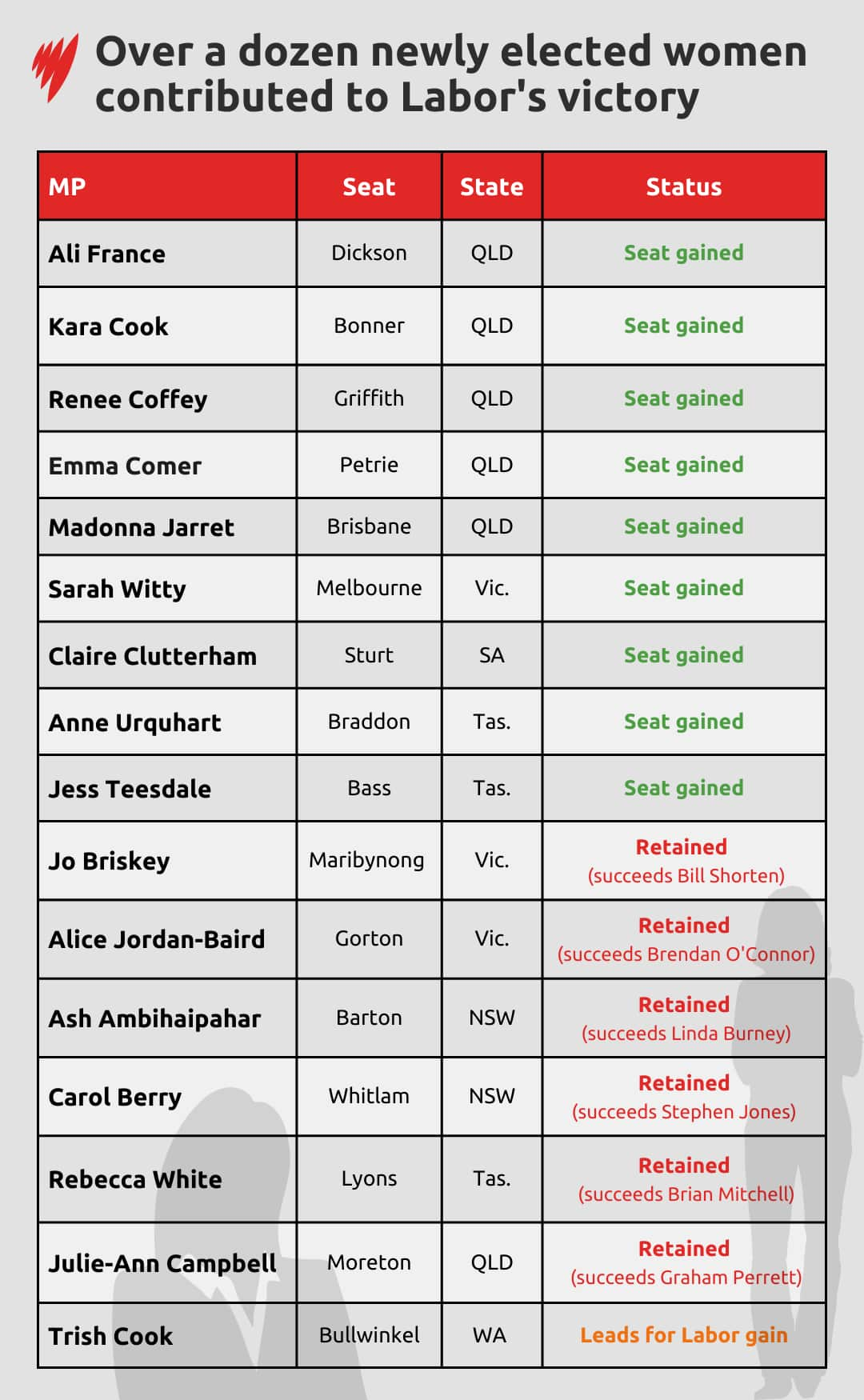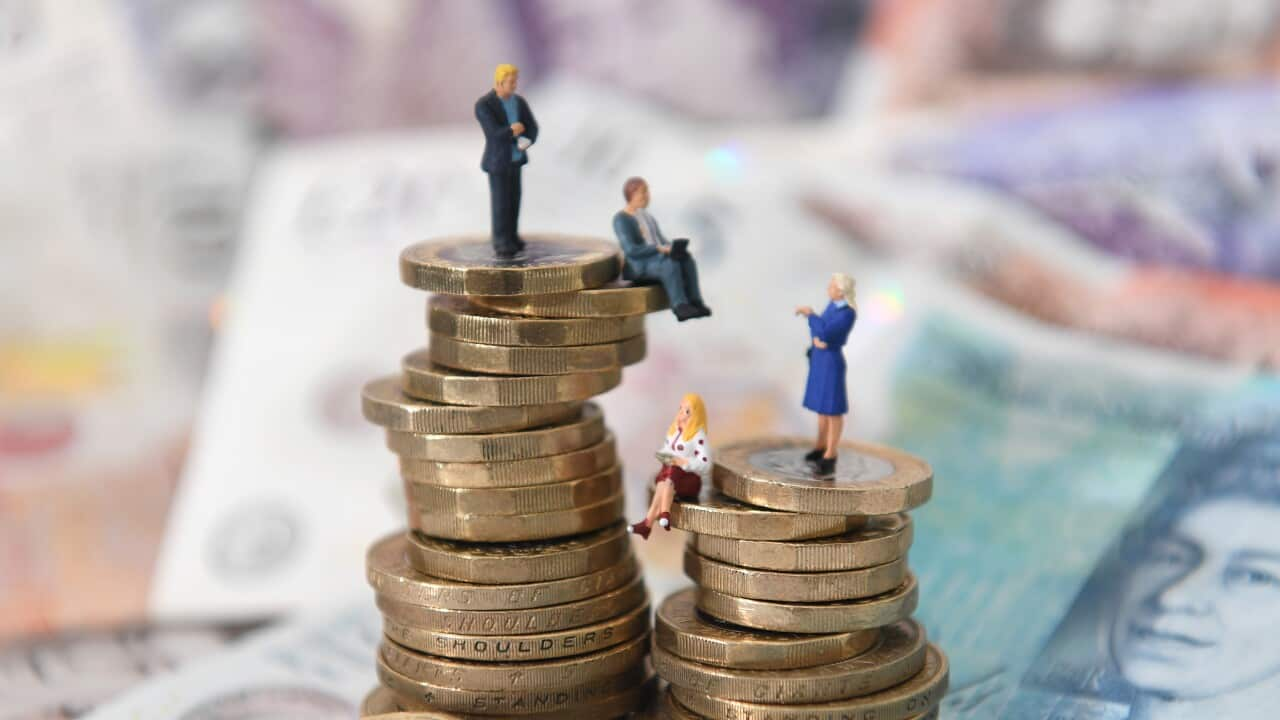A record number of women helped Labor secure its landslide election win, raising questions around how the Coalition can boost its gender diversity.
Labor women will outnumber men in the lower house for the first time, with more than 15 newly elected MPs contributing to the 51 of 92 seats polling firm Redbridge predicts for the major party so far.
There were several surprising wins, including in Dickson and .
New faces in parliament include ; Jo Briskey, who succeeds former NDIS minister Bill Shorten in Maribyrnong; and Ash Ambihaipahar, who takes over Barton from former Indigenous Australians minister Linda Burney, who has retired.
Women's Minister Katy Gallagher told ABC's RN it's a testament to Labor's continued work towards gender equality over three decades, having introduced quotas in 1994.
"The thing about gender equality in the Labor Party is everyone in the caucus is for gender equality. That conversation or that argument has been won," Gallagher said on Wednesday.

A record-breaking number of women have been elected to Australia's parliament, with a major share coming from Labor's ranks in the House of Representatives. Source: SBS News
However, that number could rise as high as 72 depending on the final results in Bean, Longman, and Monash.
Catherine Hunter, CEO of the Diversity Council of Australia, told SBS News this election marked a major milestone for gender diversity in parliament, with diversity more broadly "essential for a healthy democracy".
"When people making decisions reflect the diversity of the Australian community, the policies they create are more likely to be more inclusive, more effective, and ultimately, fairer," she said.
She said lived experience is critical to making decisions, otherwise leaders risk "overlooking or misunderstanding the realities facing huge sections of the population".
So, how does Australia compare to the rest of the world?
Coalition faces quota pressures as women representation drops
While Labor's gender diversity continues to grow, the Coalition went backwards at this election.
It elected seven women MPs out of 40, a decrease from nine in 2022. It may be boosted slightly by Gisele Kapterian, if she retains the tightly contested seat of Bradfield in NSW.
This is due to Bridget Archer losing Bass and Jenny Ware losing Hughes, as well as men replacing retiring MPs Karen Andrews in McPherson and Nola Marino in Forrest.
Of the 10 independents currently projected to enter parliament, seven are women.
Former Liberal frontbencher Simon Birmingham argues the Coalition should consider "hard, fast and ambitious" quotas for women in parliament, with representation so low.
"I struggle to think of any alternatives if there's to be a new direction that truly demonstrates change and truly guarantees that the party will better reflect the composition of modern society," he said in a post on LinkedIn.
Former Liberal NSW premier Barry O'Farrell said it is important that political parties reflect the community they represent, with more diversity both culturally and in terms of gender.
Pressed on women quotas specifically, he told SBS News the Liberals "need to increase its diversity in all areas".

A record number of women will represent Australians in the federal parliament, a considerable uptick from the 58 women who were elected to the 47th parliament. Source: SBS News
She told SBS News that alongside quotas, the Coalition needs to consider where it's placing its women candidates, avoiding the glass cliff.
The glass cliff refers to women being given leadership opportunities during difficult times or times of crises, but in a political context, can refer to being placed in more difficult contests.
"We did an analysis last election and what we saw is that women are more likely than men to be placed in risky and precarious seats, so ones that are basically either unwinnable or difficult to win or hold," she said.
"They do differ by party as well. For the Coalition, women were much more likely to be in those unwinnable seats."

Source: SBS News
How does Australia compare to the rest of the world?
Australia does "pretty well relative to its comparators", according to Ryan.
She said Scandinavian countries such as Finland, which has had three women prime ministers, and Switzerland, which has had five women presidents, often lead perceptions around gender diversity.
However, parliaments like Rwanda, which in 2024 had 50 per cent representation, often surprise the public.
"So that's partly due to quotas. It's partly to do with genocide, where many men were killed. So the reasons for representation are often different," she said.
She said this includes the rise of women to head of state due to marriage or being the daughter of a previous prime minister.
Other countries with at least half of their parliament or lower house made up of women include Cuba, Nicaragua, Andorra, Mexico and the United Arab Emirates, according to UN Women.
UN Women calculates that globally, only 27.2 per cent of parliamentarians in single or lower houses are women, with monarchy-based systems excluded from the count.
Despite a mammoth election year globally in 2024, 107 countries have yet to have a woman as the head of state.


